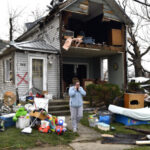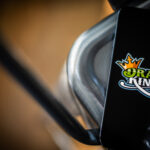Toyota Motor Corp.’s Camry, headed for its 12th consecutive year as the best-selling car in the U.S., returned to Consumer Reports’ recommended list after showing improvement on an insurance-industry crash test.
The Yonkers, New York-based magazine excluded Camry in October after the 2013 model sedan received a poor rating in a new front-end test by the Insurance Institute for Highway Safety.
The 2014 Camry with a strengthened frame received an “acceptable” rating when retested, prompting Arlington, Virginia-based IIHS to give Camrys built after November its second-highest total rating in a report released today.
“The Consumer Reports recommendation is certainly a big thing for Toyota,” said Jake Fisher, the magazine’s director of automotive testing, in a phone interview. Fisher said he wasn’t aware of any vehicle returning to the recommended list faster than Camry.
Twenty-two passenger vehicles, only two of them from a U.S. manufacturer, won the insurance group’s highest rating of “top safety pick plus,” after the new testing designed to prod automakers to improve protection in one of the deadliest types of front-end crashes.
Ford Motor Co.’s Fusion and Lincoln MKZ are the only vehicles from U.S.-based automakers on the list. Honda Motor Co., including its Acura brand, had the most top picks with six.
Another 17 vehicles, including the Camry and General Motors Co.’s minicar Chevrolet Spark, were named “top safety picks.”
Small Overlap
“There are a few automakers who are really leading the charge,” IIHS President Adrian Lund said in a phone interview. “They’re way out in front. This is more about front-runners than laggards.”
The institute in 2012 started adding a so-called small- overlap front crash test, simulating a collision at 40 miles per hour (64 kilometers per hour) in which the driver’s side corner strikes another vehicle or an immobile object such as a tree.
Since the test’s inception, automakers that market on safety have redesigned models including Honda’s Odyssey minivan to get a top rating in the test.
“What you’re seeing is that the introduction of front- crash prevention systems is a relatively recent phenomenon as is our introduction of the small-overlap front crash test,” Lund said. “There are a lot of makes out there that aren’t doing well in both of those categories.”
Sole Minivan
The Odyssey is the only minivan among the 22 winners of the top score. Vehicles receiving the accolade ranged from Mazda Motor Corp.’s Mazda 3 small car to mid-size sport-utility vehicles including the Volvo Car Corp. XC60. Toyota Prius models built after November and the company’s Highlander SUV also made the list.
Most of the models named “top safety pick plus” earned that designation only when equipped with optional — rather than standard — crash-avoidance systems, the insurance group said.
The vehicles that earned “top safety pick plus” offer crash-prevention technology that warns drivers before a crash and automatically applies the brakes. The insurance group began rating front-crash prevention systems this year and built a test track where it can do the evaluations at 12 mph and 25 mph.
“Consumers who want both crash-prevention technology and the latest in occupant protection have a fair number of vehicles to choose from,” Lund said in an e-mailed statement. “We hope manufacturers will continue to incorporate front crash prevention, developing more robust systems and adding them to more trim levels or better yet, making them standard equipment.”
Braking Systems
Sales of the Camry, Toyota’s flagship model, rose 1.3 percent this year through November to 378,520, staying more than 40,000 units ahead of its closest competitor, Honda Motor Co.’s Accord, and on pace to sell more than 400,000 this year.
While Camry’s upgrade removes one shortcoming, Toyota’s Prius v hybrid wagon, RAV4 sport-utility vehicle and Corolla compact have also had poor crash test results.
“Toyota needs to step up and not just be good enough, but among the best, to keep its position as a top automaker,” Fisher said.
Toyota’s U.S. sales unit is in Torrance, California. The company’s American depositary receipts rose 2 percent to $121.04 at the close yesterday in New York.
The U.S. National Highway Traffic Safety Administration, which conducts its own auto crash tests, is due to decide by the end of the year whether to require new passenger vehicles to have automatic braking systems. NHTSA Administrator David Strickland told reporters this week that the agency may make that decision before the year ends.
Last year, 33,561 people were killed on U.S. roads, the first increase since 2005. The 32,367 people who died in traffic crashes in 2011 was the lowest number since 1949.
–Editors: Bernard Kohn, Stephen West
Was this article valuable?
Here are more articles you may enjoy.

 Triple-I: Insurance Economic Drivers Outperform Overall US GDP
Triple-I: Insurance Economic Drivers Outperform Overall US GDP  SC High Court Strikes ‘Troubling’ Denial of Comp Claim, Says Can’t Be Based on Stats
SC High Court Strikes ‘Troubling’ Denial of Comp Claim, Says Can’t Be Based on Stats  Gallagher: Global Insured Natural Disaster Claims Again Dominated by Severe U.S. Storms
Gallagher: Global Insured Natural Disaster Claims Again Dominated by Severe U.S. Storms  DraftKings Sued Over ‘Risk-Free’ Bets That Were Anything But
DraftKings Sued Over ‘Risk-Free’ Bets That Were Anything But 